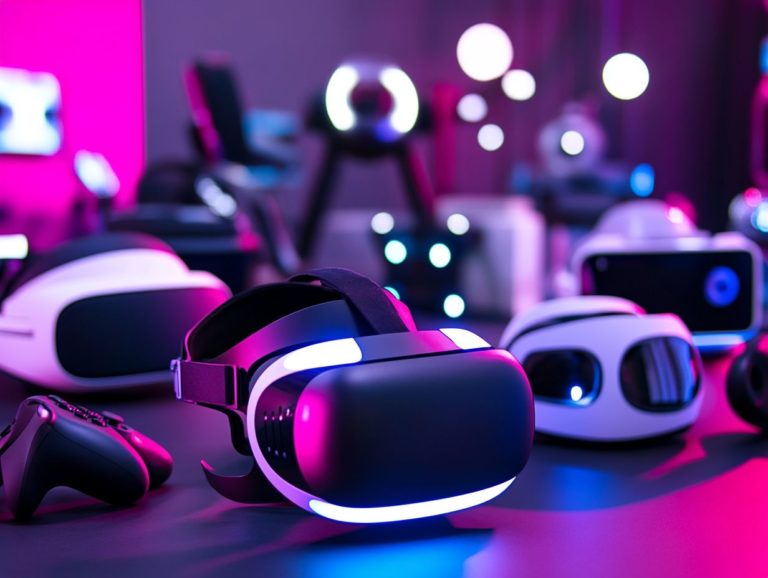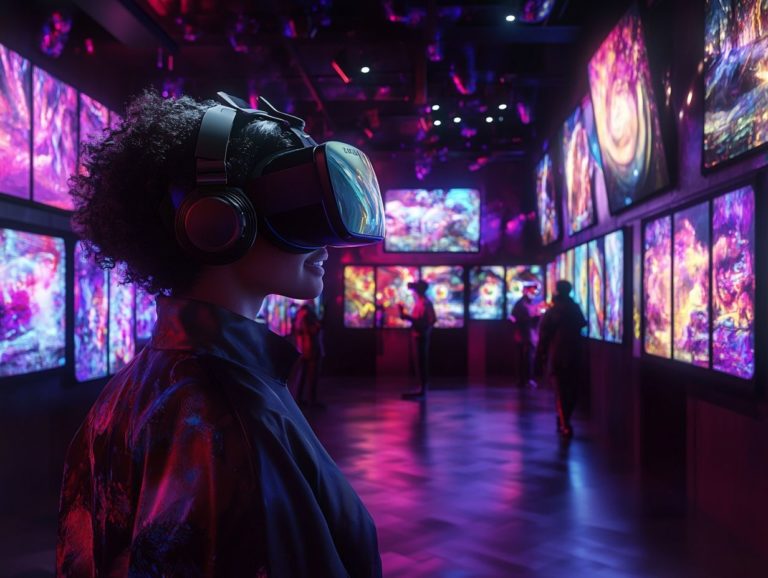creating an immersive vr environment: tips
Virtual Reality (VR) transforms how you engage with digital content. It creates environments that feel lifelike!
But what makes an experience truly immersive? This article explores key components that craft that immersion, from choosing hardware to avoiding common pitfalls.
You ll also discover best practices designed to enhance immersion and the vital importance of user testing. Whether you re a developer or an intrigued enthusiast, valuable insights await that can elevate your VR projects to new heights!
Contents
- Key Takeaways:
- Designing for Immersion
- Hardware and Software Requirements
- Best Practices for Creating an Immersive VR Environment
- Common Mistakes to Avoid
- Testing and Feedback
- Frequently Asked Questions
- What Are Some Tips for Creating an Immersive VR Environment?
- C mo puedo hacer que mi entorno de VR sea m s atractivo?
- Cu les son algunos errores comunes que se deben evitar al crear un entorno de VR inmersivo?
- Cu les son algunos recursos para aprender a crear un entorno de VR inmersivo?
- Puedo crear un entorno de VR inmersivo sin experiencia en programaci n?
- Puedo crear un entorno de VR con un presupuesto limitado?
Key Takeaways:
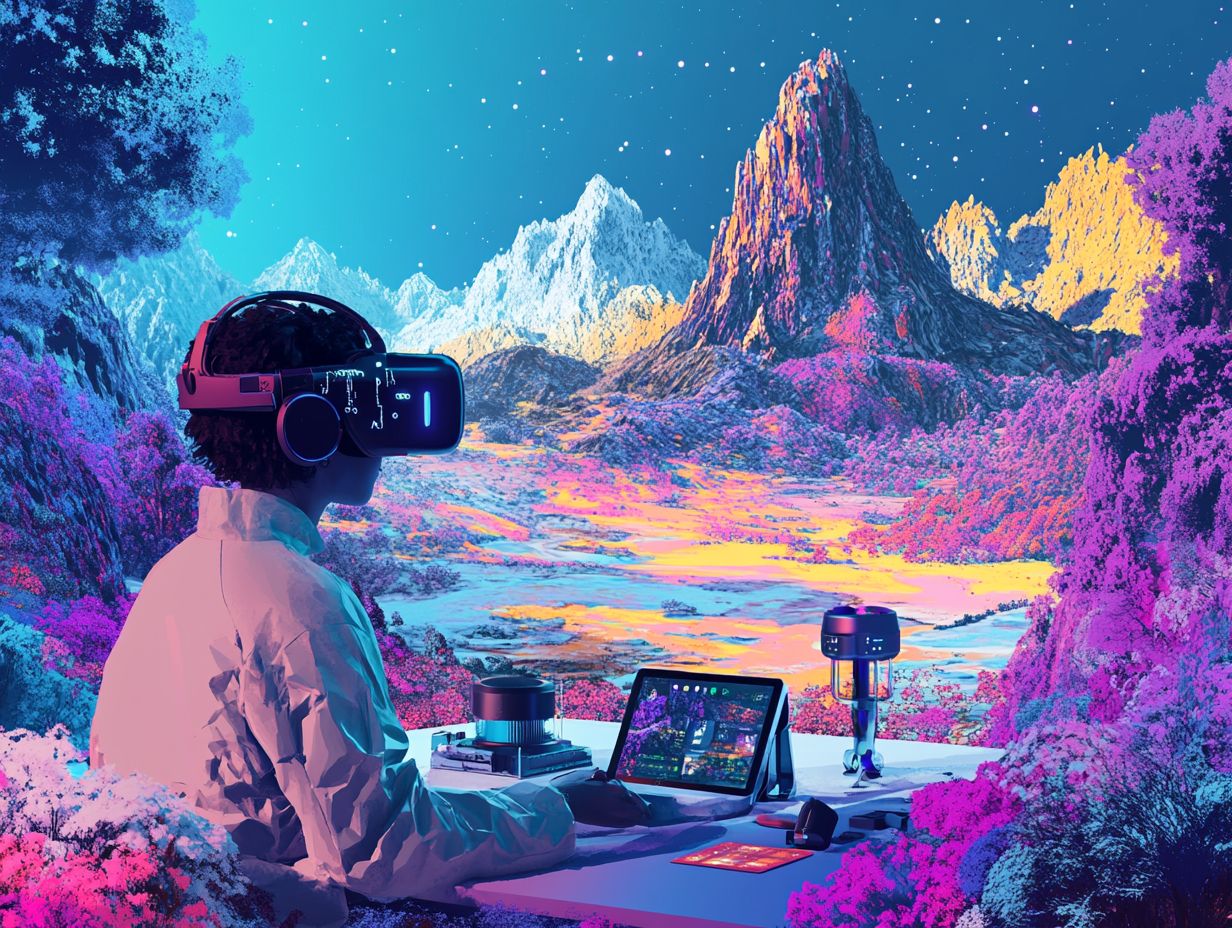
- Immerse your users in a virtual world by focusing on design elements and prioritizing immersion from the start.
- Choose the right hardware and software tools to ensure optimal performance and user experience.
- Follow best practices to create a truly immersive VR environment and avoid common mistakes that can break immersion.
- Regular user testing and incorporating feedback are crucial for success.
What is VR and Why is Immersion Important?
Virtual Reality (VR) is a game-changing technology that transports you into immersive learning environments. These experiences closely mirror real-world scenarios and significantly enhance your engagement through sensory involvement.
As the educational landscape evolves, understanding the importance of immersion is crucial for effective learning.
With VR technology, you can explore a plethora of applications think virtual field trips to historical landmarks or intricate simulations that prepare medical professionals for real surgeries!
The psychological effects of immersion are vital; learners often show increased retention and engagement when fully immersed in a virtual environment.
Research indicates that the multi-sensory engagement offered by VR not only enhances understanding but also fosters empathy, making complex subjects feel more approachable. The adaptability of VR allows you to create personalized learning paths that cater to your unique styles and needs, ultimately leading to better educational outcomes.
Designing for Immersion
Designing for immersion means crafting intricate environments that nurture emotional connections while optimizing user experience through a harmonious blend of technology and narrative design.
As VR environments evolve, it’s crucial to prioritize immersive design principles that elevate user participation, especially in educational tools and training programs. Additionally, following tips for maintaining your VR gear can enhance the overall experience.
Key Elements to Consider
When crafting an immersive VR experience, keep a few key elements in mind. Incorporate interactive components that foster understanding, integrate immersive simulations, and check out this guide on how to create an immersive VR gaming environment to add game-like elements (such as scoring systems) that enhance comfort and engagement!
Each of these components is vital for delivering a memorable experience. For example, user-controlled navigation gives individuals the power to explore virtual environments at their own pace, which significantly boosts comprehension.
Immersive simulations like realistic scenarios in medical training allow users to practice skills without real-world consequences, ultimately building confidence.
Adding game-like elements, such as achievement badges, can elevate engagement by instilling a sense of competition and accomplishment. Together, these features create an engaging atmosphere and deepen your connection to the subject matter.
Hardware and Software Requirements
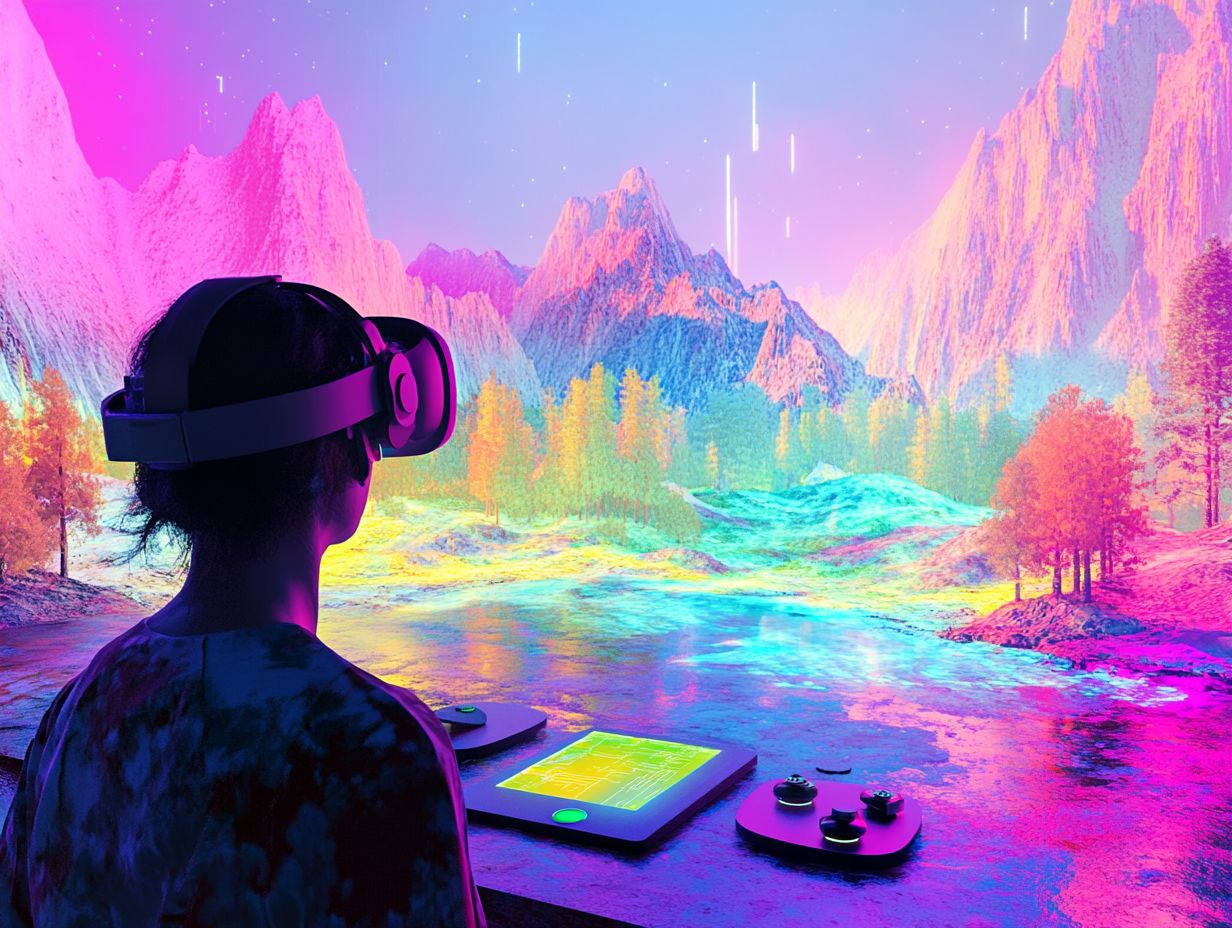
To successfully implement immersive learning experiences, you must grasp the hardware and software requirements. This includes understanding the technical equipment, 3D modeling capabilities, and selecting the right tools made for creating VR experiences.
Each of these components plays a crucial role in shaping the effectiveness of your training strategies and enhancing the overall quality of the immersive experiences you create.
Choosing the Right Equipment and Tools
Choosing the right equipment and tools for immersive learning experiences requires careful consideration of cost constraints, technical requirements, and the capabilities of immersive authoring tools. This ensures training effectiveness at its peak.
Evaluate options like virtual reality headsets, augmented reality devices, and sophisticated software platforms. Doing so is essential for delivering high-quality training. You should consider industry-standard tools such as Unity or Unreal Engine, which provide robust features for crafting engaging simulations.
It’s vital to assess hardware specifications to ensure that the graphics cards and processors can handle the demands of your chosen software. Striking a balance between budgetary limits and performance specifications will lead to smarter investments.
Be sure to check reviews or case studies that highlight performance outcomes. This will help you make informed decisions while keeping a firm grip on your budget.
Best Practices for Creating an Immersive VR Environment
Implementing best practices is essential for creating immersive VR environments, as outlined in exploring VR worlds: what you need to know, that elevate participant involvement.
Focus on effective training strategies that forge emotional connections and weave in immersive storytelling to enrich the overall user experience.
By leveraging feedback loops, you can iteratively refine these experiences, ensuring they meet learning objectives and maximize engagement techniques.
This approach not only enhances the quality of the VR experience but also fosters deeper connections with your audience.
Tips and Techniques for Optimal Immersion
Take action now to achieve optimal immersion in VR experiences! You must employ effective engagement techniques, incorporate rich sensory details, and foster active user participation. Additionally, learning how to create a safe VR gaming space is vital in crafting dynamic content within immersive environments.
By utilizing the strength of sensory engagement think realistic auditory cues and haptic feedback you can truly feel as though you re part of the virtual world. Implementing dynamic content creation allows for adaptability based on your interactions, making each experience uniquely yours.
Consider real-world applications like educational platforms that utilize VR for anatomy lessons; these techniques can significantly enhance your understanding and retention. Case studies show that environments designed with user agency where you can influence outcomes or explore freely greatly elevate your level of engagement.
Thus, blending these strategies sets the stage for genuinely immersive experiences.
Common Mistakes to Avoid
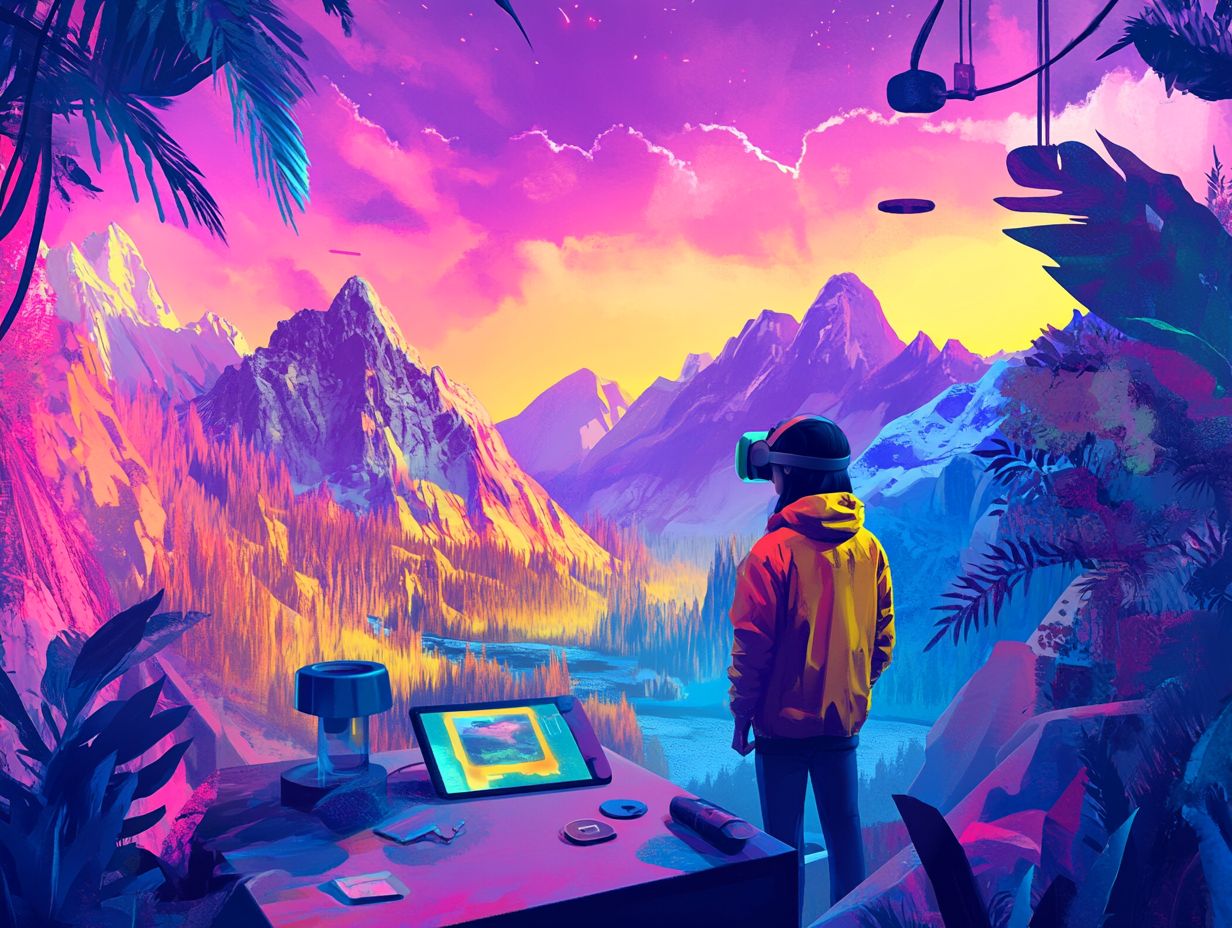
Identifying common mistakes to avoid in immersive learning experiences is essential for preserving user experience and ensuring effective immersive design.
As a developer, it s important to pay attention to technical requirements and establish emotional connections with users.
Overlooking these aspects can lead to pitfalls that diminish the overall experience, ultimately hindering the impact of your immersive offerings.
Pitfalls That Can Break Immersion
Pitfalls that can break your immersion in VR environments often arise from a lack of user comfort, poorly conceived narrative design, and inadequate feedback loops (ways to gather responses from users), all of which can stifle community building and overall engagement. To avoid these issues, consider navigating VR development effectively.
These challenges can present themselves in multiple ways. For example, you might experience motion sickness due to poorly calibrated movement mechanics or find yourself grappling with a storyline that doesn’t align with your expectations of the virtual experience.
Imagine facing abrupt shifts in perspective or speed. This can leave you feeling disoriented and disengaged, rather than fully immersed and actively participating.
To navigate these pitfalls effectively, developers should prioritize your comfort by offering customizable movement settings and comprehensive tutorials. Creating a coherent narrative that resonates with you can enhance your emotional investment.
Integrating real-time feedback loops fosters a sense of agency and connection, ultimately enriching your immersive experience.
Testing and Feedback
User testing is crucial! Integrating feedback in immersive learning experiences profoundly impacts audience motivation and the overall effectiveness of training.
By establishing structured feedback loops, you can refine your content to align more closely with user needs and preferences, ensuring a richer and more engaging experience.
Importance of User Testing and Incorporating Feedback
User testing and incorporating feedback are essential for elevating your training programs. These practices ensure that immersive experiences resonate with your audience and utilize engagement techniques that foster active participation.
To kick off the user testing process, start with meticulous planning. Clearly define your objectives to pinpoint which aspects of the immersive experience require evaluation. Involving a diverse group of participants will help you gain varied perspectives crucial for gathering well-rounded feedback.
During execution, collect real-time insights through observations and surveys. Pay close attention to how users engage with the training material. For example, a case study involving a medical simulation platform demonstrated that user feedback led to adjustments in critical scenarios, significantly enhancing learner outcomes.
This iterative feedback loop not only sharpens your content but also optimizes the overall design, ultimately elevating the user experience to new heights.
Frequently Asked Questions
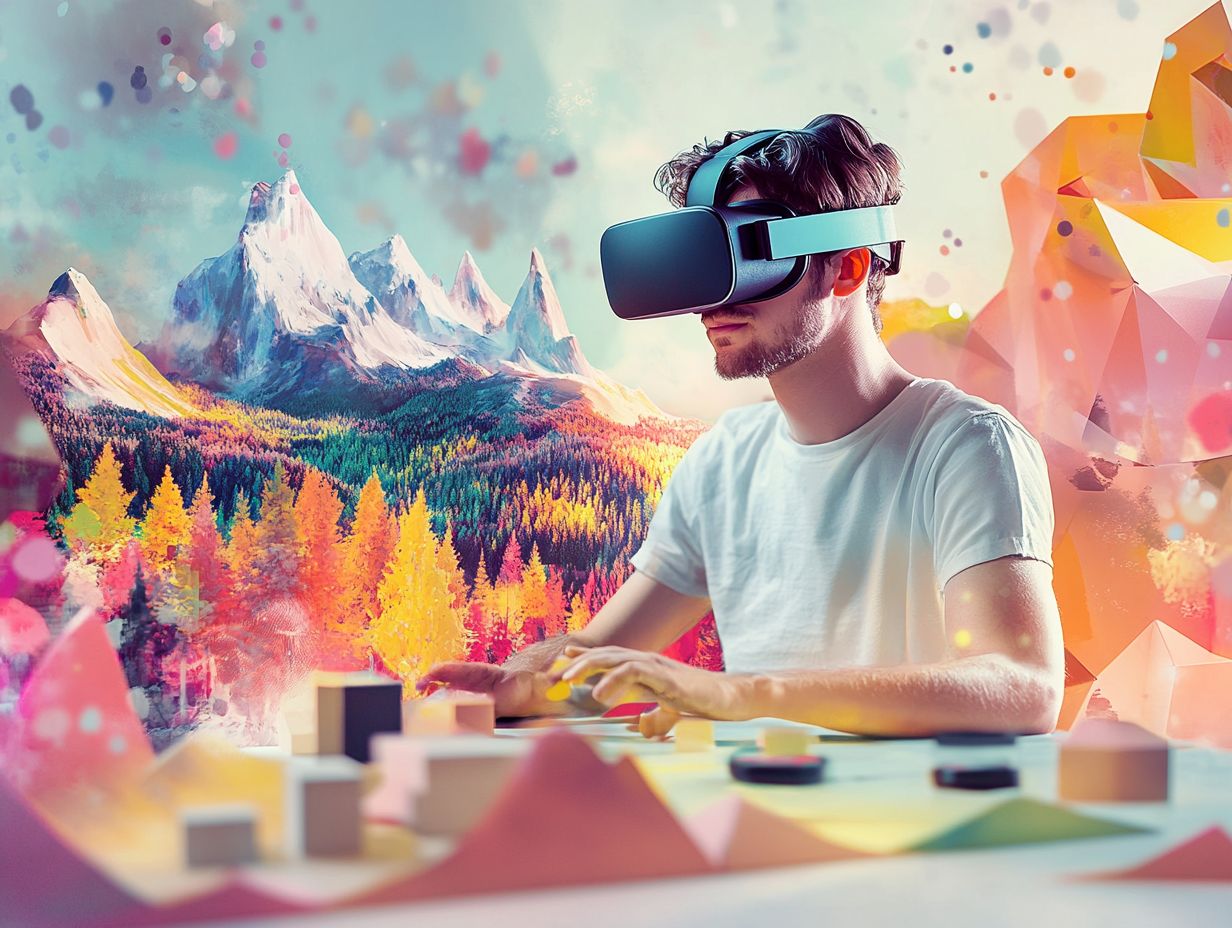
What Are Some Tips for Creating an Immersive VR Environment?
- Start with a clear concept: Before diving into the creation process, have a clear idea of what type of environment you want to create and what emotions you want to evoke.
- Use high-quality, realistic graphics: Visuals are crucial for creating an immersive VR experience, so ensure you use high-quality and realistic graphics.
- Pay attention to details: Small details can make a big difference in overall immersion, so take the time to add textures, lighting, and sounds.
- Experiment with different perspectives: VR allows for a 360-degree view, so take advantage of this by experimenting with various perspectives and angles to make the environment feel more realistic.
- Integrate interactive elements: Adding interactive elements, such as objects that can be touched or moved, can greatly enhance user immersion in the environment.
- Test and gather feedback: Like any creative process, it s essential to test your VR environment and collect feedback from others to continuously improve and refine it.
C mo puedo hacer que mi entorno de VR sea m s atractivo?
1. Incorpora narrativa: Crea una experiencia inolvidable en VR con narrativa cautivadora! Una historia bien elaborada puede transportar a los usuarios al mundo de VR y hacer que se sientan m s invertidos en el entorno.
2. Utiliza efectos de sonido: Los efectos de sonido pueden mejorar enormemente la inmersi n. Considera a adir ruidos ambientales o m sica para crear una experiencia m s atractiva y realista.
3. Incluye desaf os interactivos: A adir desaf os o rompecabezas interactivos puede aumentar el atractivo del entorno. Proporciona a los usuarios una sensaci n de logro cuando los completen.
4. Incorpora retroalimentaci n h ptica: La retroalimentaci n h ptica permite a los usuarios sentir f sicamente sensaciones en el mundo virtual, haciendo que la experiencia sea m s inmersiva.
5. Permite el control del usuario: Dar a los usuarios cierto control sobre el entorno, como la capacidad de moverse o interactuar con objetos, puede aumentar su compromiso.
6. Actualiza y a ade nuevo contenido continuamente: No esperes! Mant n tu entorno de VR fresco actualiz ndolo regularmente y a adiendo nuevo contenido. Esto animar a los usuarios a regresar por m s experiencias.
Cu les son algunos errores comunes que se deben evitar al crear un entorno de VR inmersivo?
1. Negligencia en la optimizaci n del rendimiento: Los entornos de VR requieren mucha potencia de procesamiento. Es crucial optimizarlos para mejorar la velocidad y fluidez, evitando retrasos o fallos que pueden romper la inmersi n.
2. Sobrecargar el dise o: Puede ser tentador a adir demasiados elementos. Sin embargo, esto puede abrumar al usuario y hacer que el entorno se sienta desordenado y poco realista.
3. No considerar la comodidad del usuario: No considerar la comodidad del usuario puede causar mareos. Aseg rate de prestar atenci n al movimiento, la iluminaci n y el sonido para hacer la experiencia m s c moda.
4. No probar lo suficiente: Es esencial probar tu entorno de VR extensivamente. Esto te ayudar a detectar problemas que puedan afectar la experiencia del usuario.
5. No optimizar para diferentes dispositivos de VR: Cada dispositivo puede ofrecer una experiencia diferente. Por lo tanto, es fundamental optimizar para cada plataforma para asegurar una experiencia consistente e inmersiva.
6. Ignorar la retroalimentaci n del usuario: La retroalimentaci n es crucial para crear un entorno de VR exitoso. Recoge comentarios y haz mejoras necesarias.
Cu les son algunos recursos para aprender a crear un entorno de VR inmersivo?
1. Cursos en l nea: Hay muchos cursos en l nea disponibles, como Udemy o Coursera, que pueden ense arte los fundamentos de crear un entorno de VR inmersivo.
2. Tutoriales y gu as: Existen numerosos tutoriales y gu as que pueden guiarte en el proceso de creaci n de un entorno de VR paso a paso.
3. Comunidades de desarrollo de VR: Unirte a comunidades y foros de desarrollo de VR puede ser una excelente forma de conectarte con otros en la industria y aprender de sus experiencias.
4. Libros y gu as: Tambi n hay muchos libros y gu as sobre el desarrollo de VR que ofrecen informaci n valiosa y consejos tiles.
5. Talleres y conferencias: Asistir a talleres y conferencias centrados en el desarrollo de VR puede brindarte experiencia pr ctica y oportunidades para conectar con expertos.
6. Canales de YouTube y podcasts: Algunos desarrolladores de VR comparten su conocimiento en plataformas como YouTube y podcasts, siendo excelentes recursos para aprender.
Puedo crear un entorno de VR inmersivo sin experiencia en programaci n?
S , es posible crear un entorno de VR sin experiencia en programaci n utilizando herramientas amigables como Unity o Unreal Engine. Estas plataformas ofrecen interfaces de arrastrar y soltar y sistemas de scripting visual, facilitando a los no programadores la creaci n de contenido de VR. Sin embargo, tener algo de conocimiento en programaci n puede ser beneficioso para crear entornos m s complejos y personalizados.
Puedo crear un entorno de VR con un presupuesto limitado?
S , es posible crear un entorno de VR con un presupuesto limitado. Puedes utilizar recursos gratuitos o de bajo costo, como software de c digo abierto y activos gratuitos.
Es esencial planificar y priorizar los elementos cruciales para tu entorno de VR. Esto te ayudar a mantenerte dentro de tu presupuesto.
Y no te olvides de colaborar! Trabajar con otros desarrolladores puede ayudarte a subcontratar tareas y a ahorrar costos.




